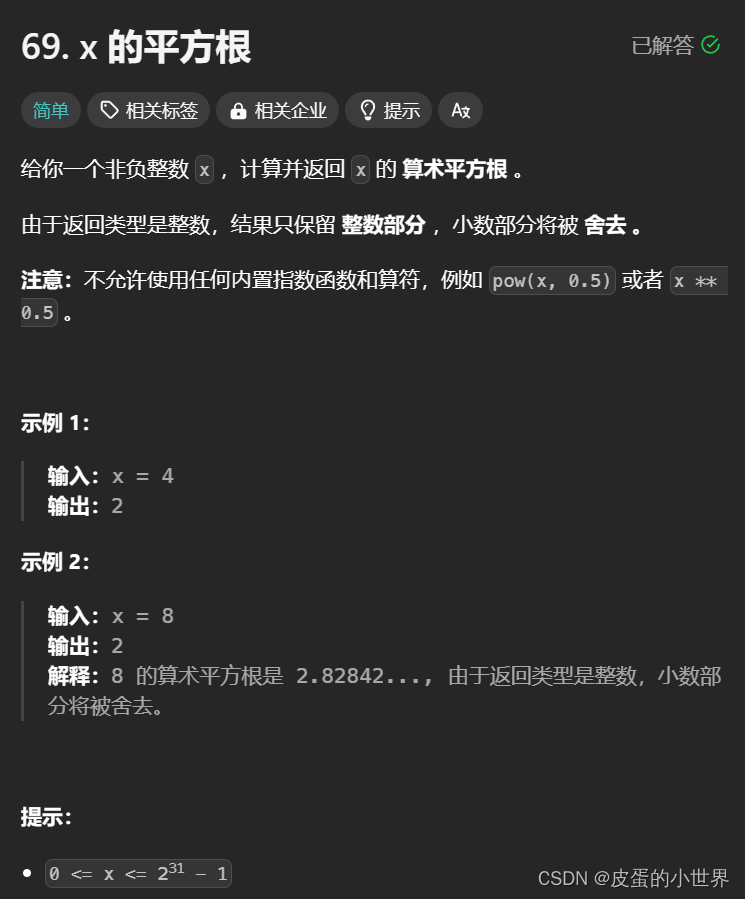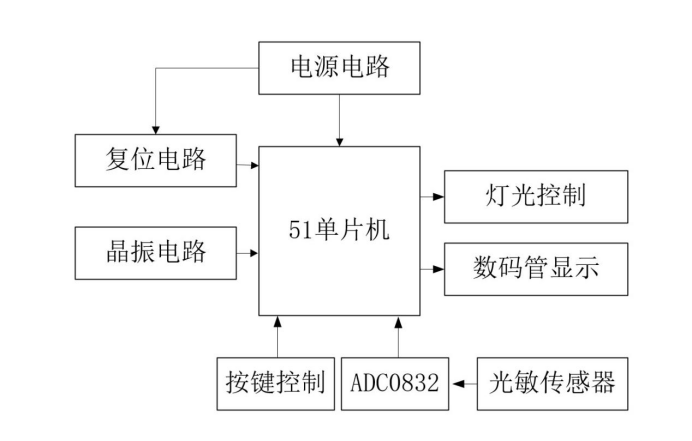铁汁们大家好,我们上一篇博客学习了单链表,这节课让我们继续往深学习,学习一下双线链表,话不多说,我们开始吧!
目录
1.双向链表
1.我们要实现的双线链表是带头双向循环链表,它的结构最复杂,一般用在单独的存储数据。我们实际中使用的链表数据结构都是带头双向循环链表。
2.它虽然结构复杂,但是在我们用代码实现过程中,它比单链表简单。
3.相信很多铁汁不清楚双向链表的结构是什么,如下图:
2.顺序表和链表的优缺点
我们在这里总结一下这两种线性表,方便之后的学习。
顺序表:
优点:空间连续,支持随机访问
缺点:中间或前面部分的插入和删除,时间复杂度是O(n);
增容很不方便,代价较大。
链表:
优点:任意位置的插入删除,时间复杂度为O(1);
没有增容销耗,按需申请节点空间,不用了直接释放。
缺点:以节点为单位存储,不支持随机访问
3.双向链表的实现
经过上面的铺垫,我们来实现一个带头双向循环链表
List.h文件
#define _CRT_SECURE_NO_WARNINGS 1
#include<stdio.h>
#include<stdlib.h>
#include<assert.h>
#include<stdbool.h>
typedef int ADataType;
typedef struct ListNode
{
ADataType data;
struct ListNode* prev;//双线链表前驱指针
struct ListNode* next;//后继指针
}LN;
//双向链表初始化
LN* ListInit();
//为节点开辟空间
LN* BuyListCapacity(ADataType x);
//链表的销毁
void ListDestory(LN* phead);
//头插
void ListPushFront(LN* phead, ADataType x);
//尾插
void ListPushBack(LN* phead, ADataType x);
//打印
void ListPrint(LN* phead);
//头删
void ListPopFront(LN* phead);
//尾删
void ListPopBack(LN* phead);
//查找链表中的数据
LN* ListSearch(LN* phead, ADataType x);
//修改找到的数据
void ListModify( LN* pos, ADataType y);
//在这个位置后插入数据
void ListInsert(LN* pos, ADataType x);
//删除这个位置之后的数据
void ListErase(LN* pos);
//判断链表是否为空
bool ListEmpty(LN* phead);List.c文件
#include"List.h"
//为节点开辟空间
LN* BuyListCapacity(ADataType x)
{
LN* newnode = (LN*)malloc(sizeof(LN));
if (newnode == NULL)
{
perror("malloc is false!\n");
exit(-1);
}
newnode->data = x;
newnode->next = NULL;
newnode->prev = NULL;
return newnode;
}
//双向链表初始化
LN* ListInit()
{
//开辟空间
LN* phead = BuyListCapacity(0);
//让头节点的前驱和后继都指向自己,是一个循环
phead->next = phead;
phead->prev = phead;
return phead;
}
//链表的销毁
void ListDestory(LN* phead)
{
assert(phead);
LN* tail = phead->next;
while (tail != phead)//链表的头尾相连,当尾等于头时,说明链表空了
{
LN* next = tail->next;
free(tail);
tail = next;
}
free(phead);
phead = NULL;
}
//头插
void ListPushFront(LN* phead, ADataType x)
{
assert(phead);
LN* newnode = BuyListCapacity(x);
//若这里不使用新的变量来存储原来第一个节点的值,就先链接后,在链接前
newnode->next = phead->next;
phead->next->prev = newnode;
phead->next = newnode;
newnode->prev = phead;
}
//尾插
void ListPushBack(LN* phead, ADataType x)
{
assert(phead);
LN* newnode = BuyListCapacity(x);
//找到尾,进行插入节点
LN* tail = phead->prev;
tail->next = newnode;
newnode->prev = tail;
phead->prev = newnode;
newnode->next = phead;
}
//打印
void ListPrint(LN* phead)
{
assert(phead);
LN* tail = phead->next;
while (tail != phead)
{
printf(" %d ", tail->data);
tail = tail->next;
}
printf("\n");
}
//头删
void ListPopFront(LN* phead)
{
assert(phead);
//判断链表是否为空,为空则删不了
if (phead->next == phead)
{
printf("List is NULL!\n");
return;
}
//先记录下后一个节点
LN* first = phead->next;
LN* second = first->next;
phead->next = second;
second->prev = phead;
free(first);
first = NULL;
}
//尾删
void ListPopBack(LN* phead)
{
assert(phead);
//判断链表是否为空
if (phead->prev == phead)
{
printf("List is NULL!\n");
return;
}
LN* tail = phead->prev;
LN* prev = tail->prev;
prev->next = phead;
phead->prev = prev;
free(tail);
tail = NULL;
}
//查找链表中的数据
LN* ListSearch(LN* phead, ADataType x)
{
assert(phead);
LN* cur = phead->next;
while (cur->data != x)
{
cur = cur->next;
}
if (cur->data == x)
{
return cur;
}
return NULL;
}
//修改找到的数据
void ListModify( LN* pos, ADataType y)
{
assert(pos);
pos->data = y;
}
//在这个位置后插入数据
void ListInsert(LN* pos, ADataType x)
{
assert(pos);
LN* newnode = BuyListCapacity(x);
LN* next = pos->next;
pos->next = newnode;
newnode->prev = pos;
newnode->next = next;
next->prev = newnode;
}
//删除这个位置之后的数据
void ListErase(LN* pos)
{
assert(pos);
LN* cur = pos->next;
LN* next = cur->next;
pos->next = next;
next->prev = pos;
free(cur);
cur = NULL;
}
//判断链表是否为空
bool ListEmpty(LN* phead)
{
assert(phead);
if (phead->prev == phead || phead->next == phead)
{
return true;
}
return false;
}
Test.c文件
#include"List.h"
//带头双向循环链表的实现
void Test1()
{
LN* head = ListInit();
ListPushFront(head, 33);
ListPushFront(head, 22);
ListPushFront(head, 11);
ListPushBack(head, 4);
ListPushBack(head, 5);
ListPushBack(head, 6);
ListPushBack(head, 7);
ListPushBack(head, 8);
ListPushBack(head, 9);
ListPushBack(head, 10);
printf("ListNode:> ");
ListPrint(head);
ListPopFront(head);
ListPopBack(head);
printf("ListNode:> ");
ListPrint(head);
LN* pos = ListSearch(head, 7);
if (pos == NULL)
{
printf("Not Find!\n");
}
else
{
printf("the number is %d\n", pos->data);
ListModify(pos, 77);
printf("ListNode:> ");
ListPrint(head);
ListInsert(pos, 13);
ListInsert(pos, 14);
ListInsert(pos, 15);
printf("ListNode:> ");
ListPrint(head);
ListErase(pos);
printf("ListNode:> ");
ListPrint(head);
}
if (ListEmpty(head))
{
printf("List is NULL!\n");
}
else
{
printf("List is Notnull!\n");
}
ListDestory(head);
printf("List is disory!\n");
}
int main()
{
Test1();
return 0;
}结果:结果就是这样的,大家可以自己尝试一下!
这就是双向链表的实现,大家还是要自己敲一遍代码,帮助自己更好的掌握知识点。
谢谢铁汁们的支持,咱们下期再见!!!


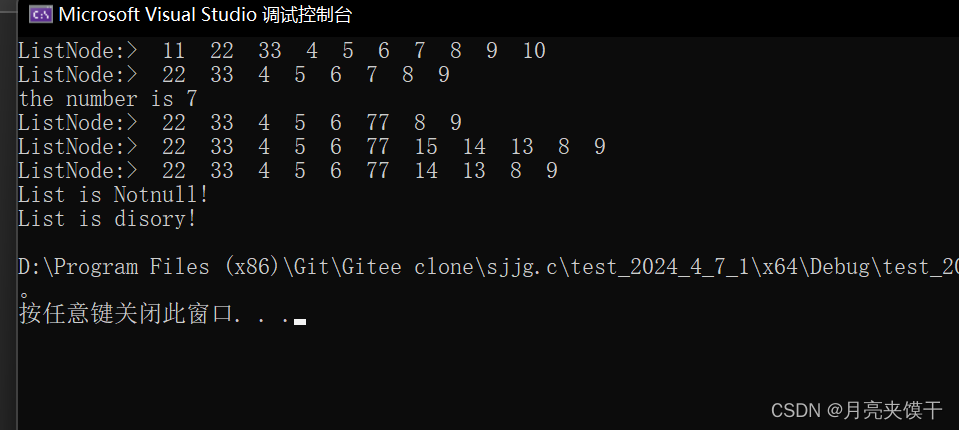

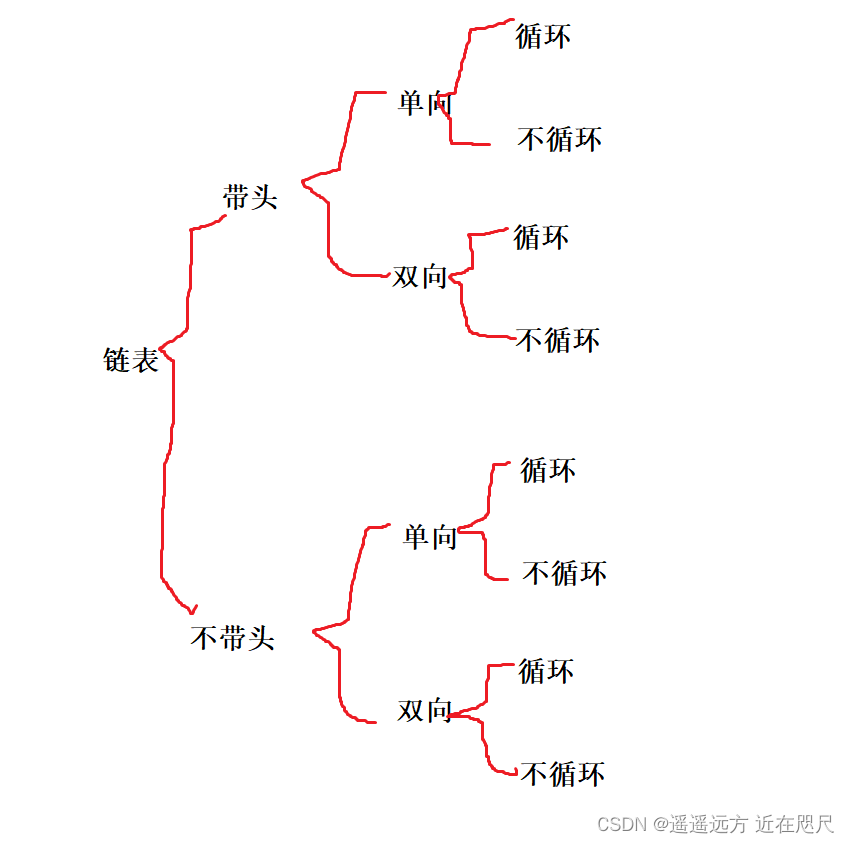

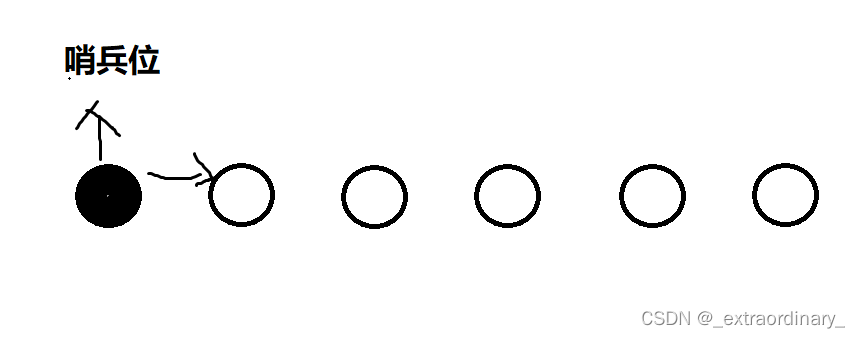
















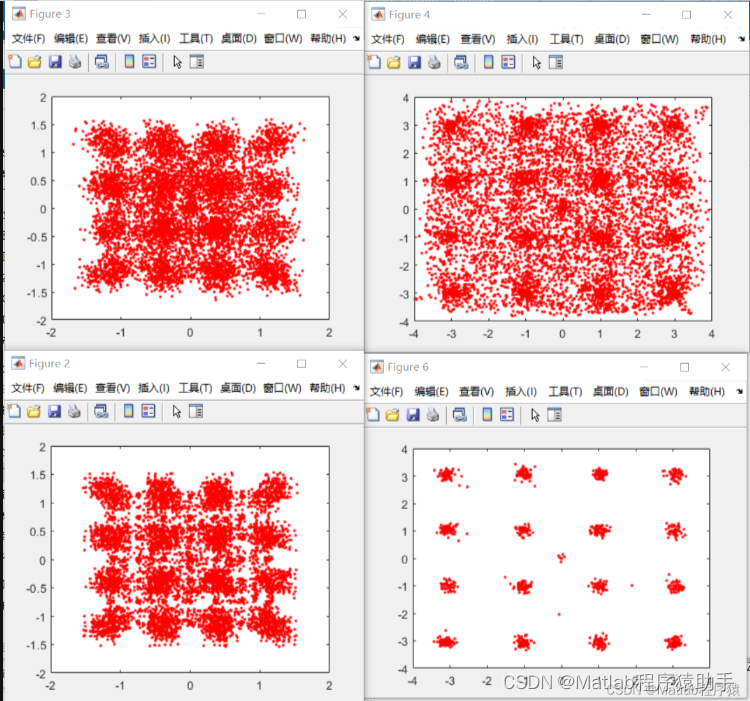







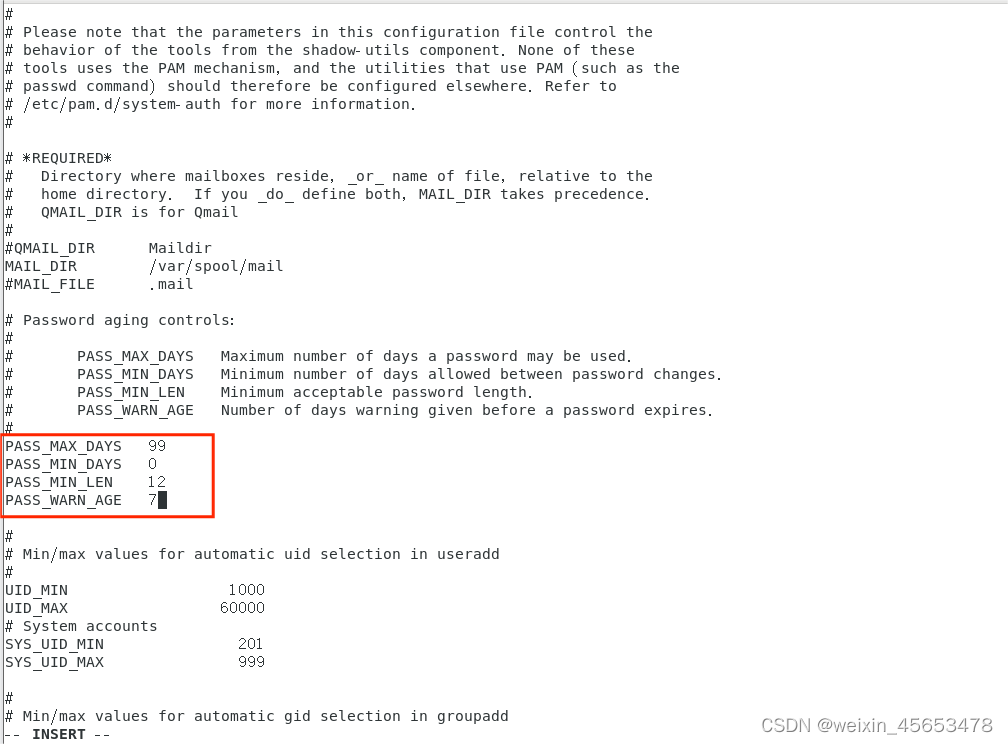


![[羊城杯 2020]Easyphp2 ---不会编程的崽](https://img-blog.csdnimg.cn/direct/d775443dba9c44079291421d883f4fca.png)
